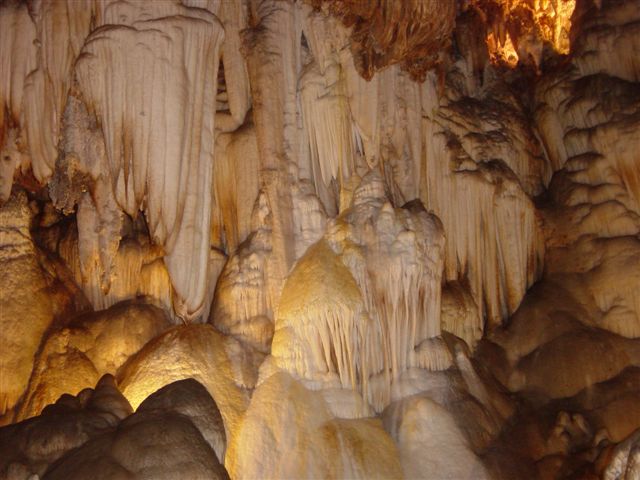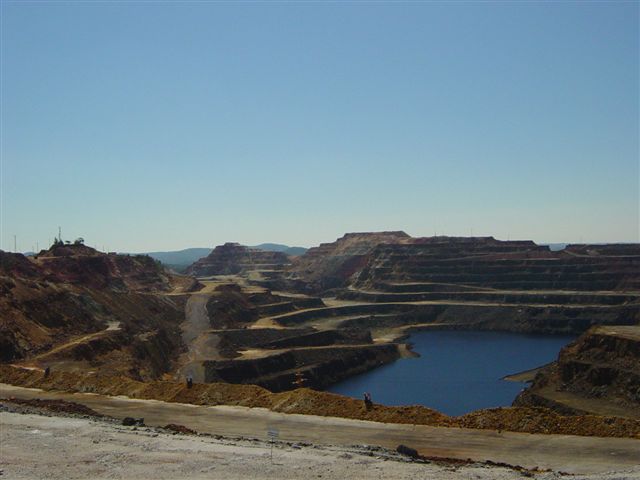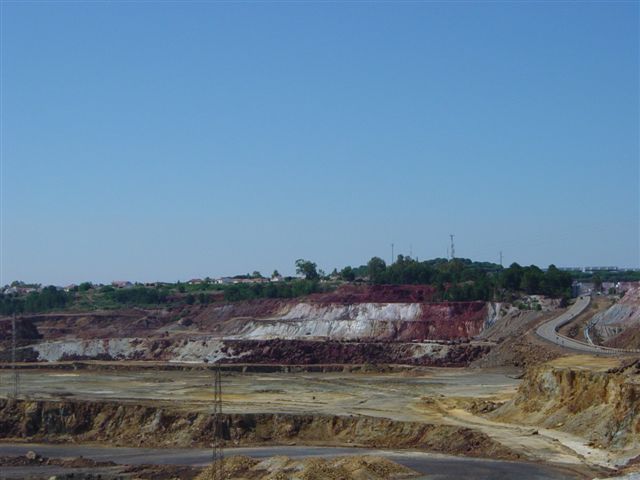| 25th June 2007 | ||||||||||||
| HUELVA AND RIO TINTO | ||||||||||||
| Tour: Self (tourist excursion) | ||||||||||||
| Weather: Hot sunshine. | ||||||||||||
| Summary of Visit:
The Gruta de Las Maravillas, or Huelva Caves are situated at Aracena,120 kilometers north of Huelva in south-west Spain. The limestone caverns stretch for more than one kilometer underground and were opened to the public in 1914, the first such caverns in Europe to be opened. The village of Minas de Rio Tinto is about 100 kilometers north-east of Huelva. The nearby Cerro Colorado was just one of five working areas within the Rio Tinto (Red River) mining area, itself just one of eight giant mining areas that make up the huge pyrite belt which stretches, 140 miles long and 30 miles wide, between Seville and the Atlantic in Portugal. The pyrite belt is described geologically as a stratiform massive sulphide deposit and was formed below the seabed in Devonian or Lower Carboniferous times (about 350Ma) when seawater, highly reactive due to its salt content, circulated hydrothermally below the ocean floor above hot spots . This produced "black smokers" similar to those which can be found in deep oceans today, and around which accumulate sulphides of iron, copper, zinc and other metals. The area was uplifted above sea level during the Hercynian (Variscan) Orogeny. Mining operations, by open pit (bench) mining, have completely removed the Cerro Colorado, or Red Hill, leaving a hole 800 feet deep and 3/4 mile wide. The history of mining at Rio Tinto has been more or less continuous since the time of the Phoenicians, around 3000 B.C. The mine owners have been British since 1871, under which ore extraction reached its peak in 1930 (around 6,700 kg/year of gold and 140,000 kg/year of silver). Copper was extracted by breaking up the ore into coarse lumps, roasting it, piling it into heaps and allowing water to percolate through. This "heap leaching" produced copper sulphate, ready for purification. But copper extraction ended in 1986, and activities ceased when silver and gold extraction finally ended in 1996. The museum in Minas de Rio Tinto has exhibits illustrating the history of mining in the area.
|
||||||||||||
|
||||||||||||


